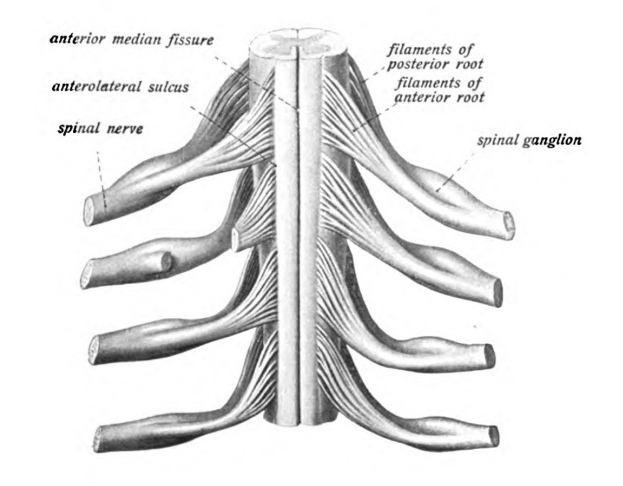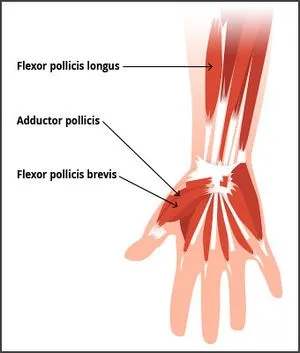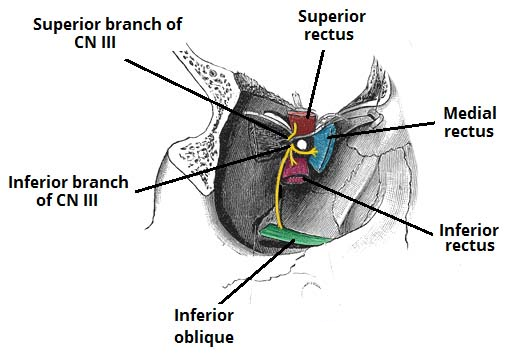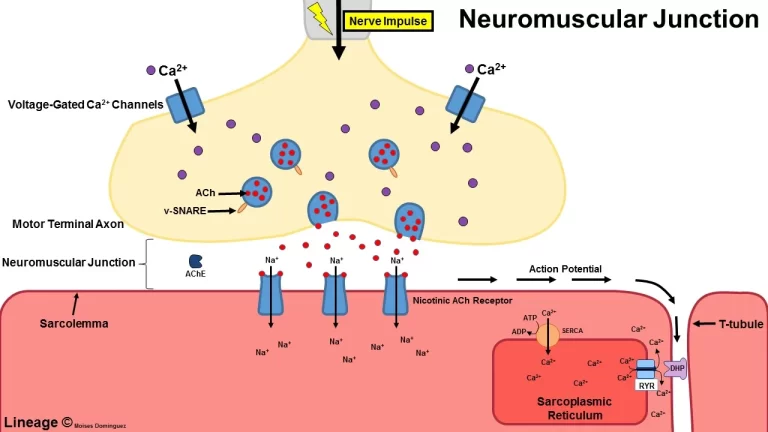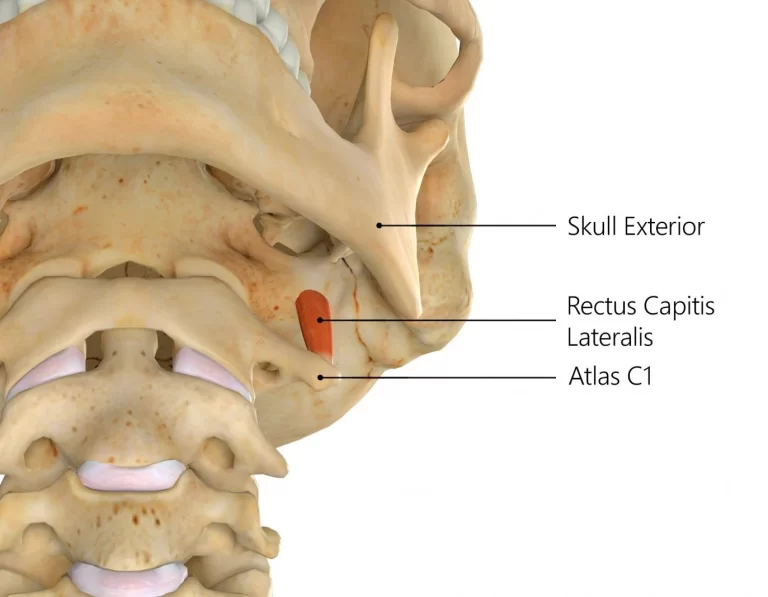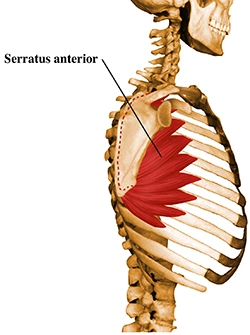Thoracic spinal nerve
Introduction
Thoracic Spinal nerve formation
There are a total of 12 pairs of Thoracic spinal nerves that get originate from the thoracic segments of the spinal cord. These nerves majorly supply the skin over the chest region and intrinsic back muscles of the thoracolumbar area. The thoracic nerves also supply some of the regions of the skin over the abdomen region and axilla.
Spinal nerves are crucial for the control of body parts by the central nervous system(CNS). If any spinal nerve is cut or gets injured, trapped, or involved in any kind of disease process, the areas of the body supplied by the spinal nerve suffer from symptoms such as pain, loss of sensation, and weakness.
Anatomy
Spinal Nerve
The thoracic spine has:
12 (twelve) nerve roots (T1 to T12) on each side of the thoracic spine that branch from the spinal cord.
Each thoracic spinal nerve is labeled for the vertebra above it. eg the T4 nerve root travels between the T4 vertebra and T5 vertebral region.
Each thoracic nerve root exits the spinal canal via an intervertebral foramen (formed by two adjacent vertebrae, and its size and shape can slightly shift as the vertebrae move).
Cross-section of the spinal cord
Each spinal nerve is formed by the compound of the nerve fibers from the dorsal and ventral roots of the spinal cord.
The dorsal roots conduct afferent sensory axons
The ventral roots conduct efferent motor axons.
The spinal nerve appears from the spinal column through the intervertebral foramen between adjacent vertebrae, where it is surrounded by the dura mater.
Each of the spinal nerves is a mixed nerve that conducts afferent and efferent fibers, somatic and autonomic fibers.
After branching from the spinal cord and running through the foramen, the thoracic nerve root branches into two various nerve bundles that nourished into the rami ventral ramus (to the ventral part of the trunk) and dorsal ramus (to the dorsal part of the trunk).
Branches
Thoracic spinal nerves serve the region thus:
T1 and T2 (top two thoracic nerves) are nourished into nerves that go into the top of the chest region as well as into the arm and hand. T1(first thoracic nerve) is also part of the Brachial Plexus.
T3, T4, and T5 nourished into the chest wall region and aid in breathing.
T6, T7, and T8 can nourish the chest and/or down into the abdomen.
T9, T10, T11, and T12 can nourish the abdomen and/or lower in the back.
The meningeal branches (recurrent meningeal or sinuvertebral nerves) branch from the spinal nerve and re-enter in the intervertebral foramen to supply the ligaments, dura, blood vessels, intervertebral discs, facet joints, and periosteum of the vertebrae.
Clinical Relevance
Each vertebra in the vertebral spine is correlated with the nerves that are in that section of the spinal cord. If any of these great nerve roots become compressed, irritated, or damaged, pain and functional issues can occur.
Natural reasons for thoracic vertebral spine nerve damage it include disc herniation, thoracic radiculopathy, and a narrowing of the vertebral foramen.
External causes for the nerve damage include blunt-force trauma and surgery.
Disc herniation
Below are more examples of dysfunction of thoracic spinal nerves
A thoracic herniated disc, causes thoracic radiculopathy, with the symptoms of pain, tingling sensation, numbness in the limb, and/or weakness radiating along with the nerve root.
These symptoms normally follow a pattern as noted above, based on the affected nerve root’s location and functions. eg, T3 radiculopathy could radiate the pain and other symptoms into the chest region through the branch of the nerve root that becomes an intercostal nerve that runs along with the route between the 3rd and 4th ribs. If the branch of the thoracic nerve going towards the back becomes inflamed, pain and other symptoms could be felt in the back at or near the region of the inflammation.
A severe strain (injury) of the muscle between the ribs (intercostal muscle) or a slipping rib, it can cause an intercostal nerve to become inflamed, and painful, and possibly make breathing more difficult and definite movements painful.
Spinal Cord Injury – if a vertebra is fractured by any kind of trauma, eg – motor vehicle accident or road traffic accident, gunshot wound a spinal cord injury may result
Spinal cord injuries are normally classified based on the spinal nerve root level where the function is decreased or completely lost. For example, a T6 spinal cord injury would impair or loss of function at the level of the T6 nerve root and below. In this case, the person would likely have full use of the arms and breathing capability but may have weakness, numbness, and other problems in the abdominal area and below, such as paralysis of both legs and bowel and bladder dysfunction.
FAQ
What happens if the thoracic spinal nerves are damaged?
Thoracic spinal cord injury (SCI) symptoms depend on the type of nerve damage. Spinal pain can spread into the arms, legs, or around the rib cage from the back toward the anterior chest region. The following may be associated with thoracic spinal nerve damage: Significant leg weakness or loss of sensation.
What do thoracic nerves affect?
T3 via T5 nerves: These nerves go into the chest wall region. Together, these nerves help to control the rib cage, lungs and diaphragm, and the muscles that help us to breathe.
What do the thoracic spinal nerves control?
The thoracic spine has 12 nerve roots (T1 to T12) on each side of the vertebral spine that branch from the spinal cord and control the motor and sensory signals mostly for the upper back region, chest region, and abdomen.
What causes thoracic spine nerve damage?
Two of the most common causes of thoracic radiculopathy are the compression caused by a herniated disc or the narrowing of the vertebral foramen, an opening through which these nerves pass. With that said, it’s also important to observe that a severe intercostal muscle sprain can also lead to nerve compression or nerve damage.
How long does it take for the thoracic nerve to heal?
With conservative treatment, most LTN injuries sort out on average within nine months, however, recovery can take anywhere from six to 24 months. Some patients may be left with some remaining scapula weakness due to incomplete healing of the nerve(1,5).
What happens if the thoracic is damaged?
A chest (thoracic) or lower back (lumbar) injury can affect the torso, legs, bowel and bladder control, and sexual function. A neck (cervical) injury affects the same regions in addition to affecting movements of the arms and, possibly, the ability to breathe.
Which thoracic nerve controls the heart?
The network of nerves supplying the cardiac is called the cardiac plexus. It collects donations from the right and left vagus nerves, as well as a donation from the sympathetic trunk. These are accountable for affecting heart rate, cardiac output, and contraction forces of the heart.
How do you treat thoracic nerve pain?
In mild cases, rest, ice, anti-inflammatory medication and decrease or relieve pain medication, and stretching exercises may be enough to decrease the symptoms of thoracic nerve root entrapment. the doctor may also suggest injections, such as facet injections, nerve blocks, or an epidural.
What motion is mostly limited in the thoracic vertebral spine?
flexion and extension
The thoracic spine is thought to have a restricted range of motion (ROM) during flexion and extension as compared with that of the cervical and lumbar spine; the ROM of the thoracic spine is restricted by the rib cage.
Can thoracic nerves affect the legs?
Leg pain taken after sciatica can be caused by spinal cord compression at the level of cervical and thoracic. Thoracic kyphosis may be a causative component in sciatica, in addition to spinal cord tumor and disc herniation, which have been announced previously.
What conditions affect the thoracic spine?
Some common conditions that affect the thoracic spine include:
vertebral canal stenosis.
Degenerative disc disease.
Herniated disc.
Spondylosis.
Compression fracture.
Sciatica.
How can I improve my thoracic pain?
Section 1: Mobility Exercises
Wall Rotations. To do this exercise – set yourself in a deep lung position with the back leg bent with a knee on the floor (with a pillow underneath) and resting on the wall. …
Kneeling Rotations.
Rolled towel extension.
Preacher Position.
Side Lying Rotation.
What causes severe thoracic pain?
Sprains and strains – Because motion is limited and numerous muscles attach to the thoracic spine, the most common cause of thoracic spine pain is myofascial (muscle and its associated connective tissue). There are numerous muscles that attach to the thoracic spine, which gives movement to the shoulders and arms.
How do you stretch the thoracic nerve?
Chin tuck exercise
Roll up a towel so it is about 5 to 7 centimeters thick.
Lie on the floor and place the rolled towel under the neck region.
Gently nod your head, bringing the chin towards the throat.
Be sure to keep the back of the head on the floor.
Hold it for about 6 seconds.
Repeat this exercise 8 to 12 times.

